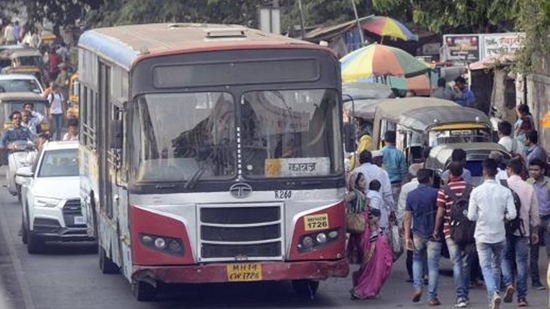Connecting transport and climate: A crucial relationship
Authored by - Hitesh Vaidya, director, National Institute of Urban Affairs (NIUA) and Sarika Chakravarty, team lead, UrbanShift Country Project, NIUA.
Ease of movement and connectivity have been considered parameters for measuring progress in cities. The industrial era was ushered in by the advent of efficient and affordable transportation. It has played a pivotal role in not only shaping the location, expansion, size hierarchy, and functional diversity of cities, but also connecting people from diverse cultures, fostering interaction and exchange. Urban transportation systems, particularly in terms of their capacity and effectiveness, are integrally linked to the rate of urbanisation and economic growth of cities.

While the direct and indirect contribution of transport to the Gross Domestic Product (GDP) is significant (6-12% in developed economies); on the downside, the sector has the highest reliance on fossil fuels of any sector and accounts for 37% of CO2 emissions from end‐use sectors in 2021. In fact, emissions from transport have grown at an annual average rate of nearly 1.7% from 1990 to 2021, faster than any other end-use sector. This is an alarming fact in light of the climate crisis that is happening right before us. Emissions from transport need urgent attention, not only due to their significant contribution towards global emissions, but also because transportation-based emissions are more injurious to human health as compared to emissions from other sources. The burden of emissions from transport is hence two-fold.
The climate crisis poses a dual challenge particularly for the developing countries: ensuring equitable access to efficient, safe, and affordable mobility for its citizenry, and minimising the resultant climate footprint. The way forward is clear--first, expand public and shared transport options to enhance livability of our cities, foster human development and social inclusion. The strongest antidote to transportation-induced greenhouse gases is building a reliable and cheap mass public transport network for the commuters. Therefore, assessing and enhancing the public transport accessibility levels of all areas within a city is required. Accessibility should be defined as not only physical accessibility (including that for people with disability) but also fiscal accessibility (or affordability). By 2070, transport demand is expected to double in light of rampant urbanisation with car ownership rates increasing by 60%, making vehicular restraint necessary. Impetus on ambitious investments in solutions such as high-quality public transport, well-connected networks, non-motorised transport options, parking rationalisation and cleaner technologies can help achieve sustainable development and climate targets simultaneously.
Second, induce efficiency in the existing transport systems by institutional, spatial and operational integration. Institutional integration will enable integrated planning and multimodality--the most essential ingredients of a sustainable transport ecosystem. The principles of spatial proximity will enable development of mixed-use walkable ‘complete’ neighbourhoods (that obviate the need for long-distance trips) and placement of higher densities near transit nodes to increase its accessibility and usage. Operational integration would provide the seamless travel experience to the commuters, synchronise operations and optimise travel time. With the rising climate risk and uncertainties like the pandemic, it is also critical that our transport systems are made more resilient. This can be done by institutionalising a data ecosystem and leveraging the data collected through the mobile applications delivering real-time information and on-demand shared mobility options to study the travel patterns and preferences for informed decision-making.
In addition to the above, reducing the reliance of transport systems on fossil-fuels is seen as the ultimate solution for minimising its carbon footprint. While biofuels and electric vehicles (EVs) have gained prominence as environmentally friendly solutions for transportation, it is essential not to overlook their potential spatial implications. First, vehicles on the road, regardless of fuel source, will contribute to traffic congestion adversely affecting mobility within urban areas. Second, the sustainability of EVs is contingent upon the cleanliness of the energy grid that powers them. While there is no denying that EVs are still the best to cut the tail pipe emissions, a complete life-cycle assessment of the EV ecosystem is required. In the spate of mitigating the climate today, the challenges of battery waste management (recycling and disposal) should not be ignored.
Another aspect that needs careful consideration is that solutions to traffic-related problems are often construction-based interventions (like construction of flyovers and subways) that are investment heavy, unsustainable, and do not provide long-term solutions. Traffic management solutions such as the creation of one-way streets, no-vehicle zones, odd-even parking, etc. that are resource efficient and more effective, should be preferred over construction-based interventions. This would also have a definite climatic impact as construction using cement is responsible for 7% of the world's carbon emissions.
Let us make a commitment to transform all urban decisions into decisions that are relevant to addressing the climate crisis. This includes implementing strategies such as nudges and other behavioral interventions, emphasizing corporate social responsibility, and incorporating indigenous decision-making. Choices concerning transportation, such as prioritising efficiency improvements rather than maintaining the status quo, will have far-reaching implications for the climate, communities, regional economies and various other factors, and it is crucial that we approach these choices with mindfulness. Let us always remember that there is no alternative planet to fall back on—this is our only home.
Authored by - Hitesh Vaidya, director, National Institute of Urban Affairs (NIUA) and Sarika Chakravarty, team lead, UrbanShift Country Project, NIUA.
All Access.
One Subscription.
Get 360° coverage—from daily headlines
to 100 year archives.



HT App & Website







